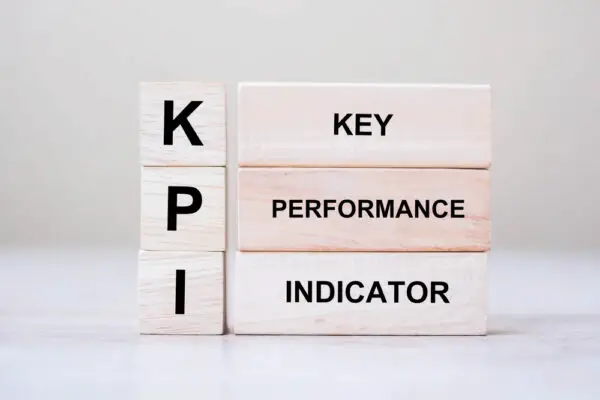Risk metrics are quantifiable measures used to assess the level of risk within an investment or portfolio.
These metrics are critical for investors and financial analysts to evaluate and compare potential losses and make informed decisions about risk management strategies.
Some common risk metrics include:
- Value at Risk (VaR): Estimates the maximum potential loss over a given time frame at a certain confidence level. Financial institutions widely use it to gauge the risk of their portfolios (Investopedia).
- Expected Shortfall (ES): Conditional Value at Risk (CVaR) measures the average loss that exceeds the VaR, providing insight into the tail risk of the distribution of potential losses.
- Beta: Represents the sensitivity of an investment’s returns relative to the market’s returns. A beta greater than 1 indicates higher volatility than the market, while a beta less than 1 indicates lower volatility.
- Standard Deviation: Measures the dispersion of a set of data points from their average. In finance, it is used to gauge the volatility of an investment’s returns over time.
- Sharpe Ratio: Assesses the performance of an investment by adjusting for its risk. It is calculated by subtracting the risk-free rate of return from the investment’s return and then dividing by the standard deviation of the investment’s returns.
- Sortino Ratio: Similar to the Sharpe Ratio but focuses only on downside volatility, which is more relevant for investors who are concerned about potential losses.
- R-Squared: Measures the percentage of an investment’s movements that can be explained by movements in a benchmark index, indicating how closely the investment follows the market.
- Maximum Drawdown: Represents the largest peak-to-trough decline in the value of an investment or portfolio over a specific period. It is an indicator of downside risk.
These risk metrics help investors understand the risk-return trade-off of their investments and make more informed decisions about where to allocate their capital.
They are also used in developing risk management policies and procedures to help ensure that the risks taken are commensurate with the organization’s risk appetite and objectives.
Risk management has become a critical aspect of every organization’s strategy in today’s ever-changing and complex business environment.
As companies strive to identify, assess, and mitigate risks, they rely on various tools and techniques to measure and quantify potential threats.

Organizations can make informed choices using risk metrics, which provide a standardized framework for evaluating and monitoring risks and allocating resources effectively.
Let’s explore the world of risk metrics and uncover their significance in strategic decision-making.
Key Takeaways
- Risk metrics provide quantitative measures of potential risks, aiding decision-making and resource prioritization.
- They help assess the likelihood and impact of risk scenarios, enabling effective risk management and monitoring.
- Risk metrics, such as Value-at-Risk (VaR), help quantify losses and evaluate volatility over time.
- Key Performance Indicators (KPIs) and risk appetite are crucial in setting risk thresholds and aligning risk with strategic goals.
The Role of Risk Metrics
Risk metrics play a crucial role in decision-making by quantitatively measuring the potential risks associated with a particular course of action.
These metrics help organizations assess the likelihood and impact of different risk scenarios, enabling them to prioritize and allocate resources effectively.
Definition of risk metrics
In the field of finance and risk management, risk metrics play a crucial role by providing a quantitative framework to measure and assess potential risks.
Risk metrics help companies identify and understand market risks, evaluate their volatility over time, and align them with their objectives.
These metrics also enable companies to analyze the impacts of risks on their operations and develop key risk indicators. Benchmarking against industry standards is another important application of risk metrics.
Importance of risk metrics in decision-making
Effective decision-making in the field of finance and risk management relies heavily on the utilization of risk metrics.
Risk metrics provide valuable insights into an organization’s risk exposure and help set appropriate risk appetite levels. Risk metrics help managers assess control effectiveness, identify performance indicators, and analyze risks comprehensively.
The importance of risk metrics in decision-making cannot be overstated, as they enable informed and proactive risk management.
| Importance of Risk Metrics |
|---|
| – Assess risk exposure |
| – Set risk appetite |
| – Evaluate control effectiveness |
| – Identify key performance indicators |
Overview of different types of risk metrics
An understanding of various types of risk metrics is crucial for effective risk management and decision-making in the field of finance and risk management.
Different types of risk metrics are used to assess and quantify risks in a systematic manner. Here are four key types of risk metrics that are commonly used in risk management programs:
- Historical approach: This approach uses past data to analyze and predict future risks.
- Scenario analysis: This involves assessing the impact of potential risk factors under different scenarios.
- Stress testing: This method evaluates a portfolio’s resilience to extreme and adverse events.
- Value-at-Risk (VaR): VaR is a widely used risk measure that quantifies the maximum potential loss within a certain confidence level.
These risk metrics help measure risk, identify downside risk, and enhance risk management processes in a dynamic and ever-changing risk environment.
Types of Risk Metrics
Different types of risk metrics play a crucial role in assessing and managing various risks within an organization. Key risks, such as market, credit, and liquidity, can be measured using different metrics.
Some key metrics include the rate of return, covariance, and Value at Risk (VaR).
Portfolio managers commonly use these metrics to evaluate the risk performance of an investment portfolio.
A coherent risk measure is an important tool in the risk management process, helping organizations make informed trading decisions.
Key Benefits of Risk Metrics
Risk metrics provide valuable insights into the potential risks faced by organizations, helping them to effectively assess, monitor, and mitigate these risks. Key benefits of risk metrics include:
- Improved risk assessments: Risk metrics enable organizations to comprehensively understand their risk profile and identify the types of risks they are exposed to.
- Enhanced risk management effectiveness: By using risk metrics, organizations can measure the effectiveness of their risk management strategies and make informed decisions to improve them.
- Cost-efficient risk management: Risk metrics help organizations determine the cost of risk management activities and allocate resources more efficiently.
- Portfolio risk management: Risk metrics provide organizations with the tools to evaluate portfolio risk and optimize their investment decisions based on ratios and average returns.
Key Risk Indicators( KRI)
Key Risk Indicators (KRIs) are essential tools for assessing and monitoring an organization’s potential risks. They provide a quantitative and qualitative measure of risk exposure, allowing companies to manage and mitigate risks proactively.
Examples of common KRIs include financial ratios, customer satisfaction metrics, and employee turnover rates. Identifying and defining KRIs specific to an organization’s industry and objectives is crucial for effective risk management.
Definition and purpose of KRIs
KRIs, or Key Risk Indicators, are essential tools in risk management, providing a means to measure and monitor potential risks within an organization.
They help understand the context of risk measurement and the relationship between risk management and financial markets.
KRIs are typically measured using the unit of volatility, considering factors such as the risk-free rate, period of time, and confidence level.
They are derived from the covariance matrix and simulations to align with an organization’s strategic objectives and quantify the variance in risk levels.
Examples of common KRIs used in different industries
Various industries utilize a range of Key Risk Indicators (KRIs) to monitor and assess potential risks within their respective sectors. In the financial markets, common KRIs include market conditions, time frames, and values.
Project-oriented industries often focus on key control indicators and goals to identify and manage future risks. Industries also analyze trends and the relationship between risk management and market conditions to define and measure KRIs for their organizations effectively.
How to identify and define KRIs for a specific organization
To effectively identify and define Key Risk Indicators (KRIs) for a specific organization, a comprehensive analysis of its specific industry, operations, and risk landscape is essential. Here are four steps to help in this process:
- Understand the organization’s risk factors and their potential impact on operations.
- Risk metrics and statistical measures such as maximum drawdown and volatility are used to assess portfolio risk.
- Benchmark the organization’s risk management practices against industry standards.
- Utilize tools like covariance matrices and software to analyze and monitor risk exposures.
Best Practices for Using Risk Metrics
Effective utilization of risk metrics is essential for organizations to make informed decisions and manage potential risks efficiently.
Organizations can use industry-standard risk metrics, such as excess return and risk factor price scenarios, to accurately assess risk allocation and identify individual risks within their portfolio.
These risk metrics serve as a portfolio risk measure, enabling organizations to evaluate their risk management performance and understand the sensitivity of portfolio risk to incremental risks.
| Risk Metrics | Best Practices |
|---|---|
| Excess return | Evaluate risk-adjusted returns |
| Risk factor price scenarios | Assess potential market fluctuations |
| Allocation of risk | Diversify portfolio to manage risk |
| Individual risks | Identify and mitigate specific risks |
| Sensitivity of portfolio risk | Analyze impact of changes on overall risk |
Key Performance Indicators (KPIs)
Key Performance Indicators (KPIs) are essential tools in risk management, providing a quantifiable measure of an organization’s performance in achieving its objectives.
Unlike Key Risk Indicators (KRIs), which focus on identifying potential risks, KPIs assess the effectiveness and efficiency of risk mitigation strategies.
Examples of risk management KPIs include financial ratios, customer satisfaction ratings, and employee productivity metrics.

Definition and purpose of KPIs
KPIs, or Key Performance Indicators, are essential tools for measuring and evaluating the performance and success of an organization or specific areas within it. To better understand the concept, consider the following points:
- KPIs provide a simple indicator of an organization’s performance.
- They help identify areas that deviate from the normal distribution, indicating potential risks.
- KPIs aid in aggregating risks, allowing for a comprehensive view of an organization’s risk profile.
- Risk management can identify the minimum risk threshold by monitoring KPIs and adjusting strategies accordingly.
Differences between KPIs and KRIs
KPIs and KRIs serve distinct purposes in measuring and evaluating an organization’s performance and risk profile or specific areas within it.
KPIs are commonly used to assess the performance of business processes, while KRIs are used to monitor risks.
KPIs focus on tracking key business objectives and outcomes, while KRIs are designed to identify and measure potential risks.
Some examples of risk metrics include principal risk measures, predictors of investment risk, and reputational risks.
Mapping risk metrics to positions on portfolio risk helps allocate internal risk management resources effectively.
Examples of common KPIs used in risk management
In risk management, organizations often utilize various key performance indicators (KPIs) to measure and assess potential risks effectively.
Some common examples of KPIs used in risk management include:
- Alpha: Measures risk-adjusted returns, helping assess the performance of an investment in relation to its risk.
- Beta: Measures volatility in relation to a benchmark for equities, providing insight into the risk associated with a particular investment.
- Downside volatility: Focuses on the negative volatility or losses in an investment, helping evaluate the downside risk.
- Portfolio variance: Quantifies a portfolio’s overall risk by measuring the returns’ dispersion.
Risk Appetite
Risk appetite refers to an organization’s tolerance for risk and its willingness to take on risk in pursuit of its objectives.
It is an important concept in risk management as it helps organizations define their risk-taking boundaries and make informed decisions about risk.
Factors influencing risk appetite determination include industry norms, regulatory requirements, organizational culture, and stakeholder expectations.
Establishing an effective risk appetite framework involves aligning risk appetite with strategic goals, defining risk appetite statements, and integrating risk appetite into decision-making processes.
Definition and importance of risk appetite
Understanding an organization’s risk appetite is crucial for effective risk management and decision-making processes.
Risk appetite can be defined as the level of risk that an organization is willing to accept in order to achieve its objectives.
It is an important attribute of risk culture and influences the assessment of risk and the determination of risk metrics.
It helps organizations evaluate risk factor return scenarios and measure volatility in the broader stock market.
Factors Influencing Risk Appetite Determination
Several key factors play a significant role in determining an organization’s risk appetite. These factors include the assessment of risk, the basis for risk metrics, lots of risks, the risk cloud, additional risk, closed risks, market model, random market scenarios, assessments of risk, and attributes of bond risk.
To provide a visual representation, the following table outlines the various factors influencing risk appetite determination:
| Factors | Description | Examples |
|---|---|---|
| Assessment of Risk | Evaluating potential risks | Risk assessments, risk analysis |
| Basis for Risk Metrics | Foundation for measuring risk | Historical data, industry trends |
| Lots of Risks | High exposure to risk | Volatile markets, uncertain environment |
| Risk Cloud | Overall risk landscape | Economic factors, regulatory changes |
| Additional Risk | Potential risks beyond norm | New product launch, expansion overseas |
| Closed Risks | Risks that have been resolved | Completed projects, settled disputes |
| Market Model | Representation of market behavior | Economic models, financial simulations |
| Random Market Scenarios | Unpredictable market conditions | Natural disasters, political unrest |
| Assessments of Risk Can | Influence decision-making | Risk appetite, risk tolerance |
| Attributes of Bond Risk | Factors affecting bond risk | Credit rating, interest rate changes |
Establishing an effective risk appetite framework
To effectively manage and mitigate risks, organizations must establish a robust framework for determining their risk appetite. Here are four key components of an effective risk appetite framework:
- Consideration of stock market and broader market trends: Understanding the current state of the market helps organizations assess the level of risk they are willing to take.
- Analysis of historical data: Using historical simulations and beta values, organizations can determine the expected rate of return and the distribution of returns over time.
- Setting a benchmark in bear market conditions: A risk appetite framework should include a benchmark for performance during market downturns to ensure resilience in challenging times.
- Incorporating a bottom-up approach: Organizations should consider the risk appetite of individual projects and incorporate it into the overall risk appetite framework, as outlined in the project closure report.
Frequently Asked Questions
How Can Risk Metrics Help Organizations in Effectively Managing Their Risks?
Effective risk management is crucial for organizations to mitigate potential threats. Risk metrics provide valuable insights and data-driven measurements that enable organizations to identify, assess, and prioritize risks, ultimately aiding in making informed decisions and implementing appropriate risk mitigation strategies.
What Are Some Common Challenges Faced by Organizations When Implementing Risk Metrics?
When implementing risk metrics, organizations commonly face challenges such as data quality issues, lack of standardized frameworks, difficulty in selecting appropriate metrics, resistance to change, and the need for skilled resources.
What Are the Key Factors That Should Be Considered When Selecting Appropriate Risk Metrics for an Organization?
When selecting appropriate risk metrics for an organization, key factors to consider include the organization’s industry, its specific risk profile, the availability and quality of data, the desired level of granularity, and the ability to measure and monitor the selected metrics effectively.
How Can Risk Metrics Be Used to Support Decision-Making Processes Within an Organization?
Risk metrics can be used to support decision-making processes within an organization by providing objective data and insights on the potential risks and their impact. These metrics help evaluate and prioritize risks, enabling informed and effective decision-making.
What Are Some Potential Limitations or Drawbacks of Relying Solely on Risk Metrics for Risk Management Purposes?
Relying solely on risk metrics for risk management purposes can have limitations. They may not capture all types of risks, overlook qualitative factors, and fail to account for changing circumstances or emerging risks.

Conclusion
In an organization, risk metrics are crucial to assess and manage risks by identifying them, measuring their impact, and making informed decisions to mitigate them.
Organizations can effectively monitor and control their risk exposure using key and performance indicators.
Best practices for using risk metrics help organizations enhance their risk management strategies and achieve their desired risk appetite.
Using risk metrics is crucial to maintain an effective proactive risk management approach.

Chris Ekai is a Risk Management expert with over 10 years of experience in the field. He has a Master’s(MSc) degree in Risk Management from University of Portsmouth and is a CPA and Finance professional. He currently works as a Content Manager at Risk Publishing, writing about Enterprise Risk Management, Business Continuity Management and Project Management.

